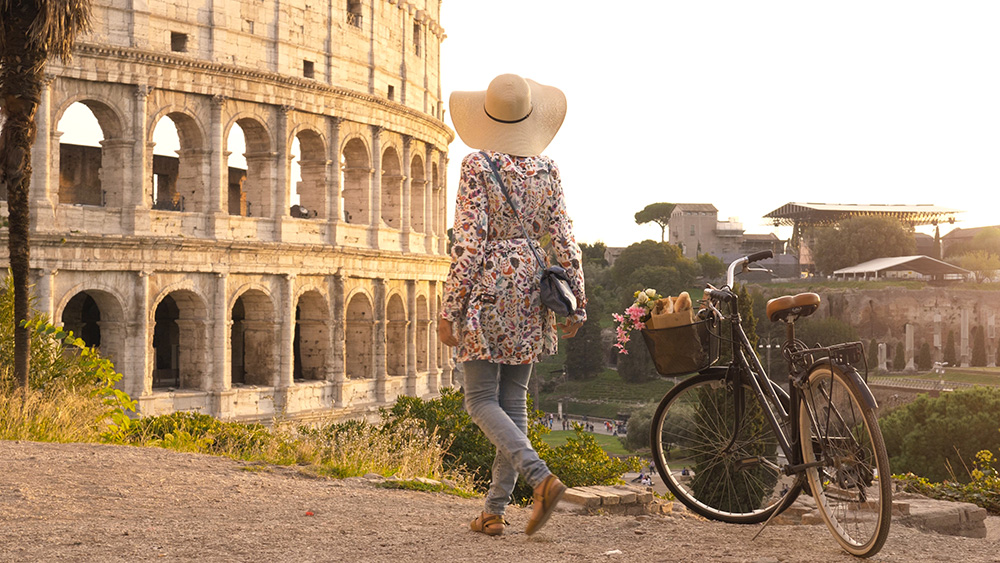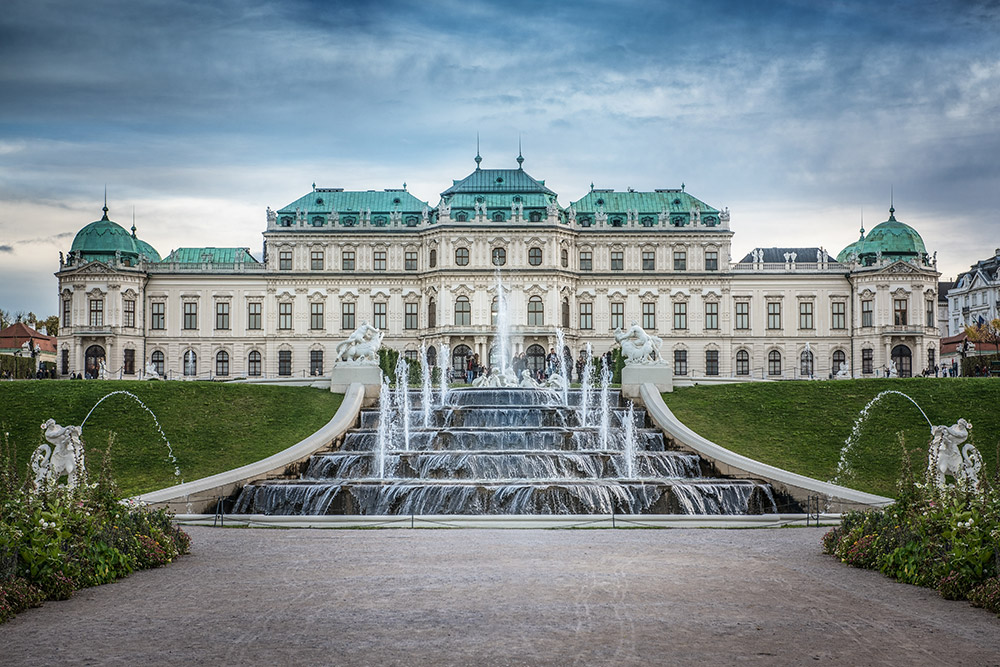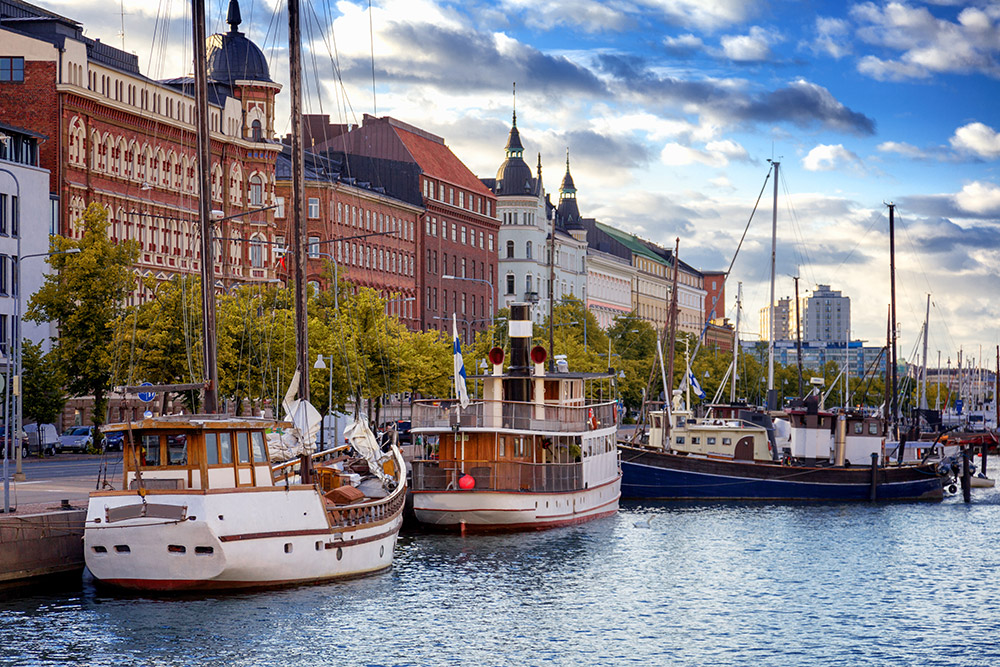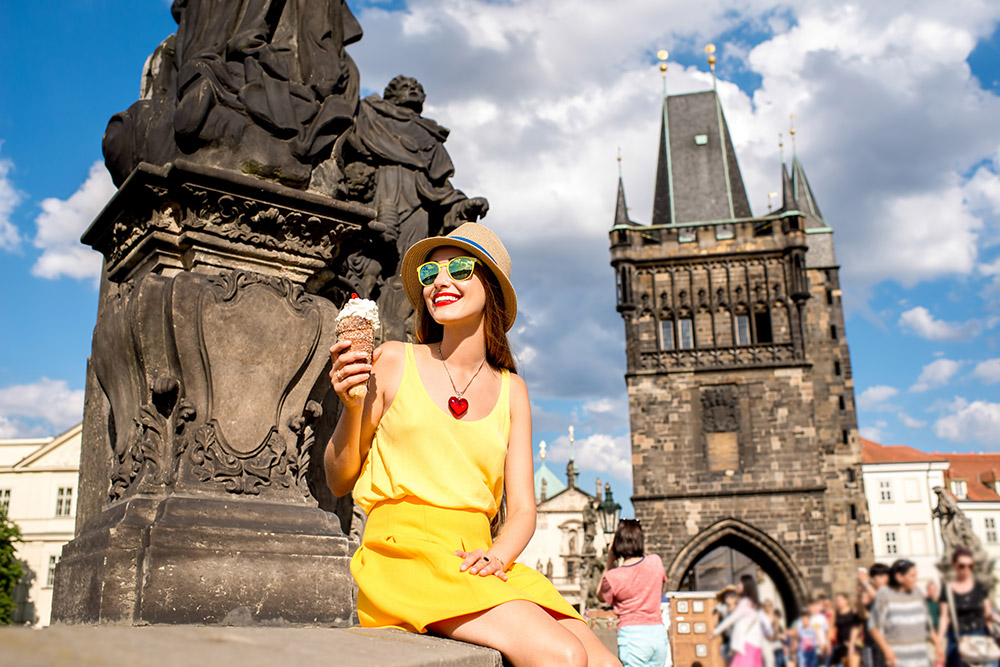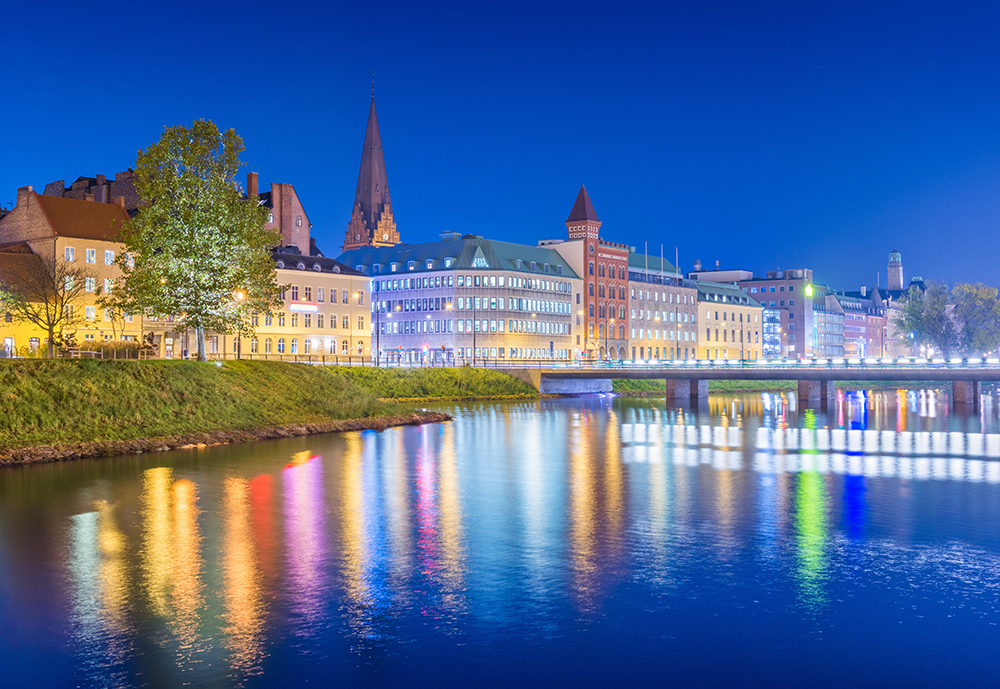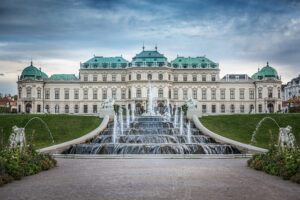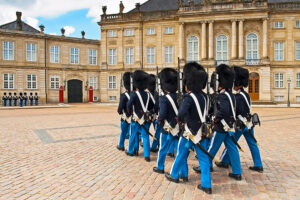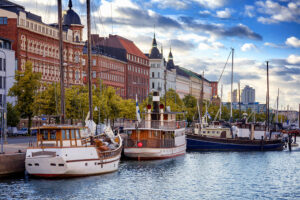Welcome to the enchanting walking tour of Rome! This proposed route highlights significant landmarks, starting with the Basilica Papale di Santa Maria Maggiore, adorned with breathtaking mosaics. Continue to the Basilica di San Pietro in Vincoli, home to Michelangelo’s statue of Moses. Explore the iconic Colosseum, marvel at the Arch of Constantine and the Arch of Titus, venture into the ancient ruins of the Roman Forum, and proceed to the Campidoglio and the Monumento a Vittorio Emanuele II. Ascend Capitoline Hill and visit Piazza Venezia to immerse yourself in Rome’s political and cultural heritage. The journey continues to the Santa Maria Sopra Minerva Basilica and Bernini’s Elephant and Obelisk sculpture, leading to the lively Piazza Navona and Castel Sant’Angelo, offering panoramic city and Vatican views. Conclude your exploration at the heart of the Catholic faith: St. Peter’s Basilica and the Vatican Museums.
Join us for an unforgettable odyssey through Rome’s timeless beauty and captivating heritage! The total length of the walking tour is just over 3.5 miles, with an average walking time of up to 20 minutes between points. The duration of the tour varies based on individual preferences and interests at each site. The tour begins at Rome’s central train station and concludes in the Vatican Square.
Here is a detailed list of the sites along the way:
Start the tour at Roma Termini train station, proceeding through Via Giovanni Giolitti and then Via Gioberti, leading to the Basilica Papale di Santa Maria Maggiore. This site is one of the wonders of Rome’s religious heritage and one of the city’s most magnificent basilicas. Established in the fifth century, it is adorned with breathtaking, ornate Byzantine mosaics that narrate biblical tales and historical events. The basilica’s architectural splendor, combined with its spiritual atmosphere, creates a sense of awe, inviting visitors to witness the fusion of art, history, and religious devotion.
Descending from the church, take Via dell’Olmata to reach the Basilica di San Pietro in Vincoli, a modest yet artistically important church. Constructed around the relic that once held the chains believed to have bound St. Peter, its interior hosts the legendary sculpture by Michelangelo: Moses, crafted at the beginning of the 16th century. This remarkable masterpiece, part of Pope Julius II’s unfinished tomb project, serves as both a religious tribute and a Renaissance-period masterpiece and exemplifies Michelangelo’s unmatched ability to capture human emotions in marble.
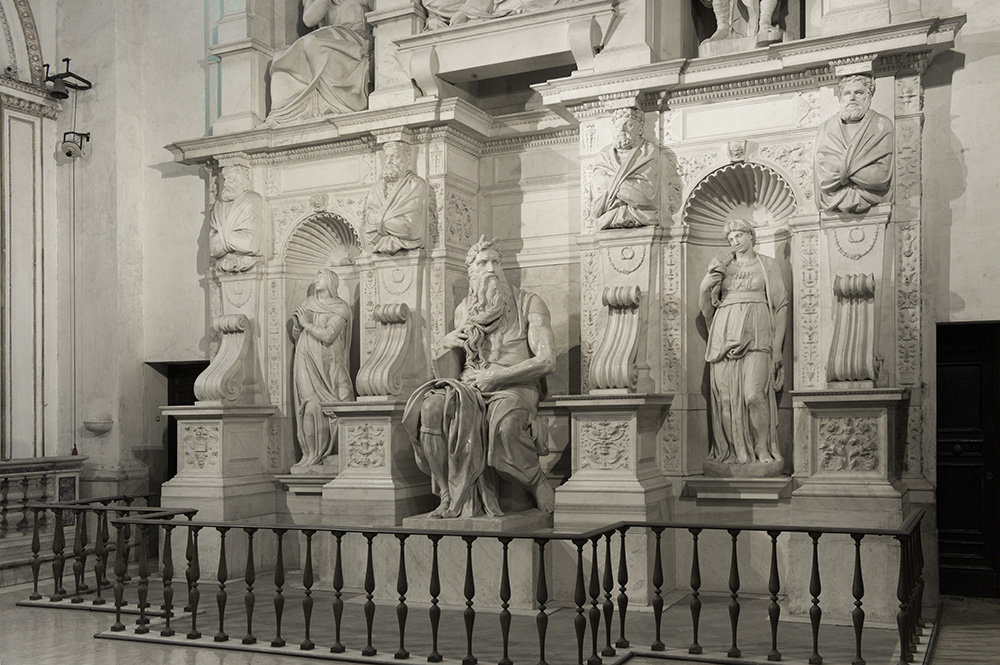
Continuing from the church, proceed through Via Eudossiana towards the Colosseum, the iconic amphitheater symbolizing Roman engineering and entertainment. Erected in the 1st century AD, this magnificent structure served as a venue for gladiator contests, animal hunts, and various public amusements. Adjacent to it stands the Arch of Constantine, commemorating Emperor Constantine’s victory in the Battle of Milvian Bridge. This triumphal arch, celebrated for its architectural grandeur, features intricate reliefs, forming a historical monument.
Facing the Colosseum is the entrance gate to the Roman Forum, the political, social, and commercial center of ancient Rome. This historical site, the heart of Roman life, hosted public speeches, elections, and various government buildings. It is adorned with remnants of temples, basilicas, and monuments.
Upon entering, you’ll see the Arch of Titus, a triumphal arch constructed to commemorate Emperor Titus’s victories, notably the siege and capture of Jerusalem in 70 AD. This ancient monument boasts detailed reliefs depicting scenes from the Roman conquest. Continue strolling through the Forum’s diverse sites until reaching the Arch of Septimius Severus, a victory arch dedicated to Emperor Septimius Severus and his sons Caracalla and Geta. Renowned for its architectural grandeur, the arch features intricate reliefs illustrating Severus’s military triumphs.
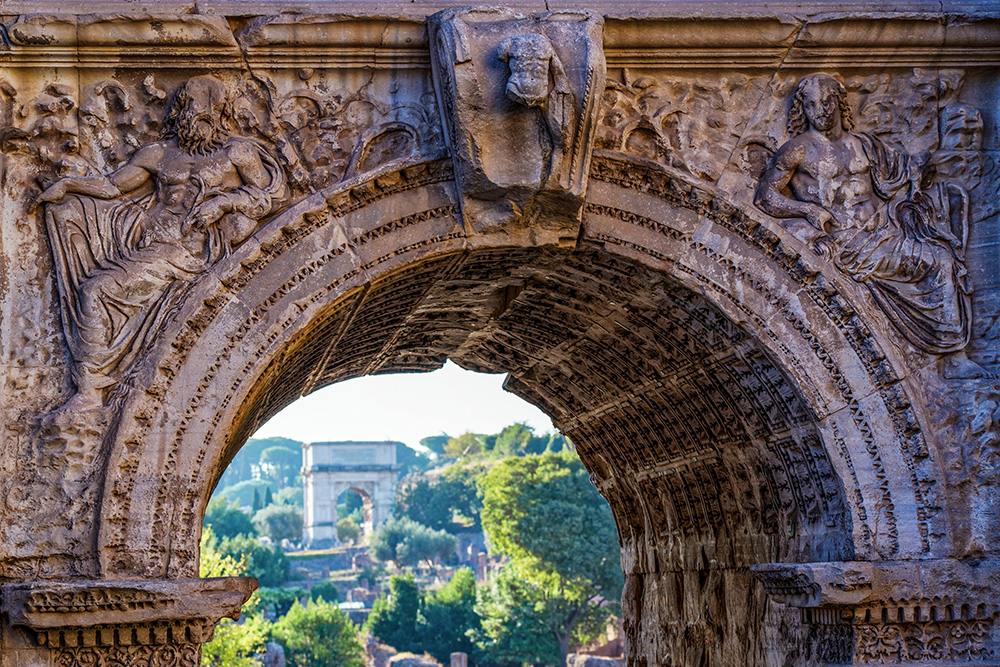
As you backtrack in the direction you came from, near the Temple of the Dioscuri, turn towards the exit to Via dei Fori Imperiali and head towards the Temple of Venus Genetrix. Once there, take a left uphill towards the statue of the Capitoline Wolf (Lupa Capitolina). This bronze statue, traditionally attributed to Etruscan art, portrays the legendary she-wolf suckling Romulus and Remus, the mythological founders of Rome. It stands as a powerful symbol of the city’s foundational narrative.
Enter the expansive Campidoglio square, surrounded by the Capitoline Museums, which house exceptional collections of ancient art and artifacts. Marvel at famous classical sculptures, paintings, and archaeological treasures in this stunning environment. Descend from the square through Via del Teatro di Marcello to Piazza Venezia, where the central focus is the Palazzo Venezia — a blend of history and art. Formerly a papal palace, it now serves as a museum displaying a diverse collection of historical art and artifacts, offering insights into the palace’s history and many aspects of Italian art and culture.
From the square, there’s an impressive view of the enormous Monumento a Vittorio Emanuele II, an imposing neo-classical structure built in honor of the first king of unified Italy. Its grandeur symbolizes Italian unity and independence, featuring Corinthian columns, sculptures, and the Tomb of the Unknown Soldier. Initially controversial due to its size and style, it is now a national symbol, representing Italy’s struggle for unity and commemorating its unification under King Vittorio Emanuele II.
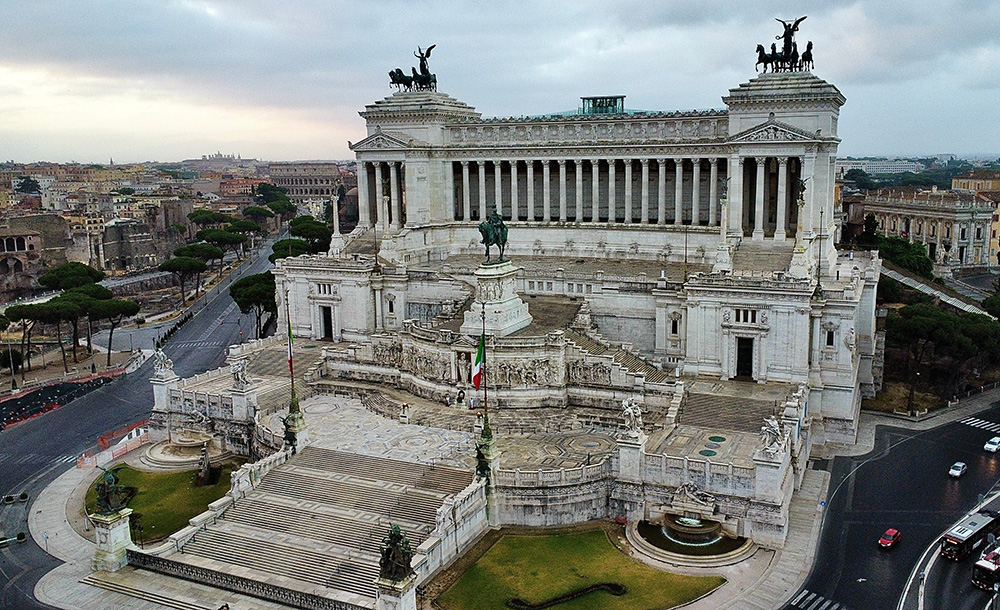
Moving on from Piazza Venezia, traverse Via del Corso, taking a left after Galleria Doria Pamphilj onto Via Piazza del Collegio Romano, which leads to Basilica di Santa Maria Sopra Minerva. At the front of the church is Gian Lorenzo Bernini’s masterpiece: The Elephant and Obelisk, a testament to Bernini’s artistic genius. Sculpted in the 17th century, it features an Egyptian obelisk carried on the back of an elephant. A short stroll ahead brings you to the Pantheon, an ancient Roman temple transformed into a church, a marvel of architecture with its iconic dome and open oculus. Marvel at the historical and engineering brilliance of the building, exemplifying the artistic and architectural achievements of ancient Rome.
Exiting the Pantheon, continue along Salita de’ Crescenzi, winding through an alley to reach the renowned Piazza Navona. This square is renowned for its distinctive Baroque architecture and lively ambiance. Originally a Roman stadium, the square features three fountains, including Gian Lorenzo Bernini’s masterful Fountain of the Four Rivers. From the northern edge of the square, turn left onto the narrow path of Via dei Coronari until Via del Banco di Santo Spirito, which leads to the bridge over the Tiber River: Ponte Sant’Angelo. This bridge will bring you to Castel Sant’Angelo, a historic fortress that once served as Emperor Hadrian’s mausoleum and was later used as a papal residence and prison. Today, it is a museum offering insights into its rich history and providing panoramic views of Rome from its rooftop terrace.
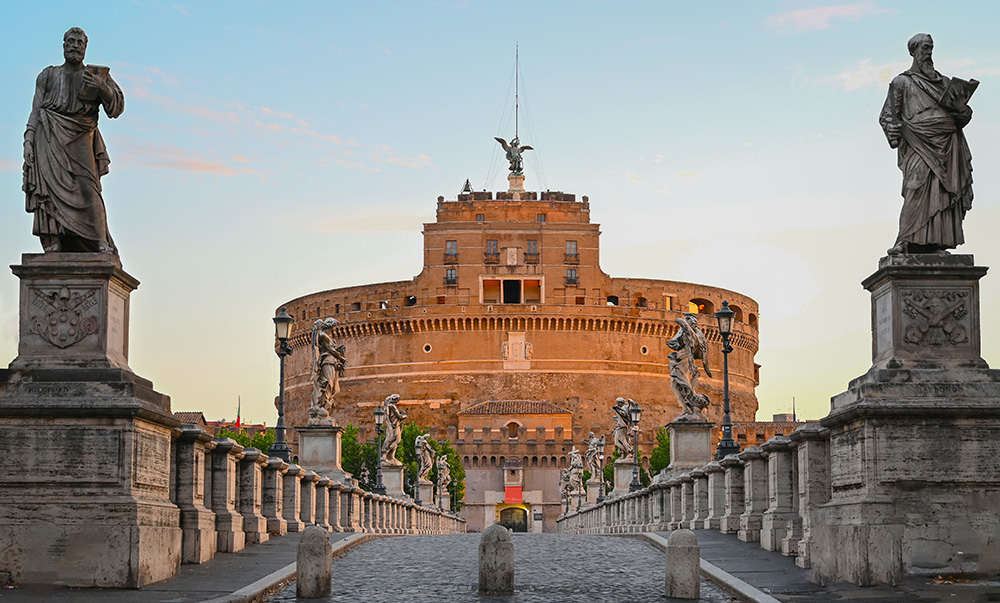
From Castel Sant’Angelo, follow Via della Conciliazione to Vatican City and the Basilica of Saint Peter. Situated within the Vatican City, this basilica has both religious and architectural magnificence, crafted by the hands of Michelangelo, Bernini, and other masterful artists. The grand dome and Renaissance art captivate visitors, while the sacred space, housing Michelangelo’s “Pietà” sculpture and the tombs of popes, symbolize the heart of Catholicism. Beyond its spiritual significance, the basilica stands as a testament to human creativity and devotion, welcoming pilgrims and art enthusiasts from around the world.
The Vatican Museums, located within Vatican City, proudly showcase a vast array of historical treasures. Visitors can explore numerous galleries, with the Sistine Chapel, adorned with Michelangelo’s iconic ceiling paintings, taking center stage. The museums house an impressive collection featuring sculptures, paintings, tapestries, and ancient artifacts, establishing themselves as a prominent destination for art enthusiasts and tourists seeking a culturally rich experience in Rome.


